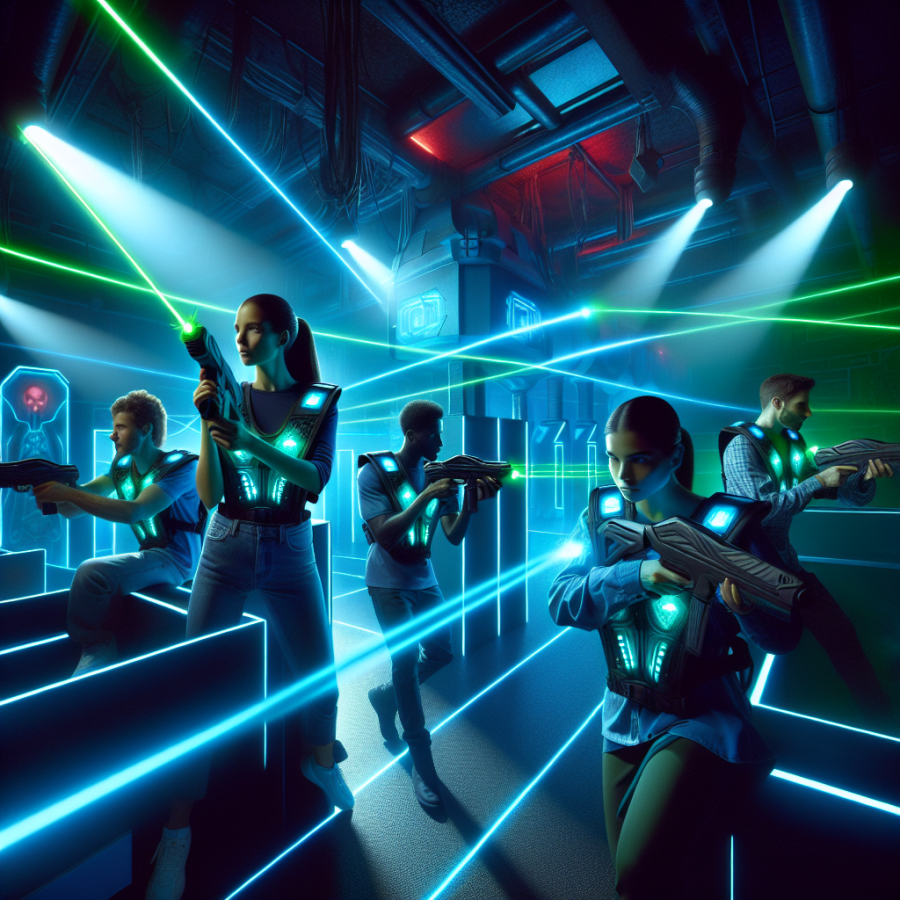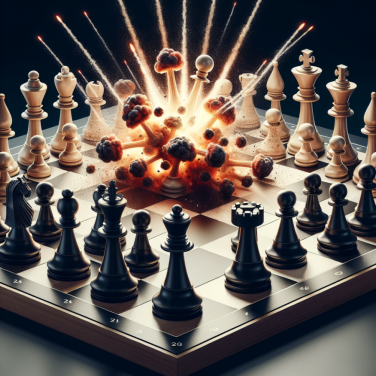Team Dynamics and Strategic Play: Winning Together in Laser Tag Combat
In any team-based activity, understanding the nuances of team dynamics can drastically improve performance and overall success. When it comes to laser tag combat, the same principle applies—knowing how to operate cohesively as a team can turn a fun game into a strategic and thrilling experience. Winning together entails more than just accurate shooting; it requires communication, role allocation, strategic planning, and adaptability.
**Communication is Key**
Clear and concise communication is critical in laser tag. Teams that communicate effectively can coordinate movements, plan ambushes, and warn each other of incoming threats. Use code words or signals to convey messages stealthily. Ensuring that each team member is aware of the game plan and any mid-game adjustments can make the difference between victory and defeat.
**Role Allocation: Each Player Counts**
Assigning specific roles to team members is a strategic play that leverages individual strengths. For example, having a designated sniper, an assault leader, and support individuals can create a balanced dynamic. Players should understand their roles—snipers provide cover fire from a distance, assault leaders spearhead attacks, and support players ensure the team is functioning cohesively.
**Strategic Planning: Formulate a Game Plan**
Before beginning a match, devise a game plan. Discuss team formations, attack plans, and which areas of the arena to hold or avoid. Identify choke points and high-traffic areas to plan ambushes or defensive stands. Setting up fallback points and regrouping locations can help maintain order if the team gets scattered.
**Adaptability: Stay One Step Ahead**
A good team can quickly adapt to the changing tides of battle. Be prepared to adjust strategies as new information becomes available or if certain tactics aren't working. Perhaps the opponent has caught on to your signals, or they've figured out your hiding spots—it is important to remain flexible and pivot as necessary.
**Coordinated Attacks and Defenses**
Executing coordinated attacks can overwhelm the opposing team, making it difficult for them to defend multiple points simultaneously. Conversely, organized defense can create an impenetrable shield, especially when players cover for each other's blind spots and vulnerabilities.
**Utilizing Terrain to Your Advantage**
Understanding the arena's layout and using it strategically can give your team the upper hand. Use obstacles for cover, high ground for vantage points, and narrow corridors to funnel opponents into traps. Being familiar with the terrain also allows for quick escapes or regrouping when necessary.
Read also:
Mastering the Game of Checkers: Strategies and Tips
Mastering the Arena: Advanced Techniques for Laser Tag Domination
As you dive deeper into the dynamic world of laser tag, mastering advanced techniques is key to dominating the arena and outmaneuvering your opponents. Taking your skills to the next level requires a blend of strategic thinking, teamwork, and agility. Here, we explore a series of high-level tactics and strategies designed to elevate your laser tag gameplay and secure your status as a formidable player.
**Stealth and Camouflage**: The art of stealth involves moving quietly and remaining unseen. Use the shadows to your advantage and wear dark clothing to blend into darker environments. Practice moving silently and avoiding sudden movements that can attract attention. Utilizing elements of camouflage can break up your silhouette and make it harder for opponents to spot you.
**Communication Codes**: Develop a system of hand signals or code words with your team to communicate silently and effectively. This reduces the chance of opponents overhearing your plans and allows for coordinated strikes and movements. Ensure every team member understands the codes perfectly to avoid confusion during the heat of the game.
**Positional Awareness**: Always be aware of your surroundings and the locations of both teammates and opponents. Use this knowledge to anticipate enemy movement and set up ambushes. Maintain a mental map of the arena and use it to position yourself in strategic locations that provide both cover and a clear line of sight.
**Target Prioritization**: Identify which opponents pose the most significant threat and focus on taking them out first. High-scoring players or those with advanced skills should be prioritized to weaken the opposing team's effectiveness. Be strategic in who you target and when to ensure that you're making the most impactful plays.
**Feinting and Deception**: Use deceptive tactics to lure opponents into traps or expose them to your teammates. Feint attacks in one direction while the rest of your team positions themselves for the real strike. Misdirection can confuse opponents and give you the upper hand in encounters.
**Dynamic Movement**: Incorporate rolls, dives, and quick changes of direction into your movement to make it harder for opponents to hit you. Practice moving from one cover to another quickly and efficiently to minimize exposure. Staying mobile also makes it more challenging for enemies to predict your next move.
**Use of Cover**: Master the use of cover by learning how to peek out and shoot without exposing too much of your body. Practice quick leans and snap shooting, where you briefly pop out to take a shot before returning to cover.




